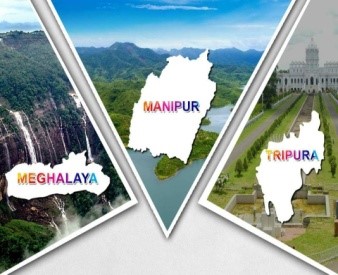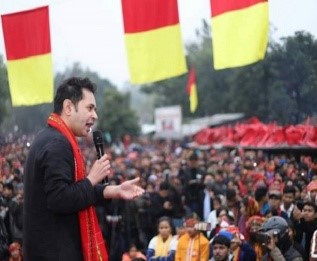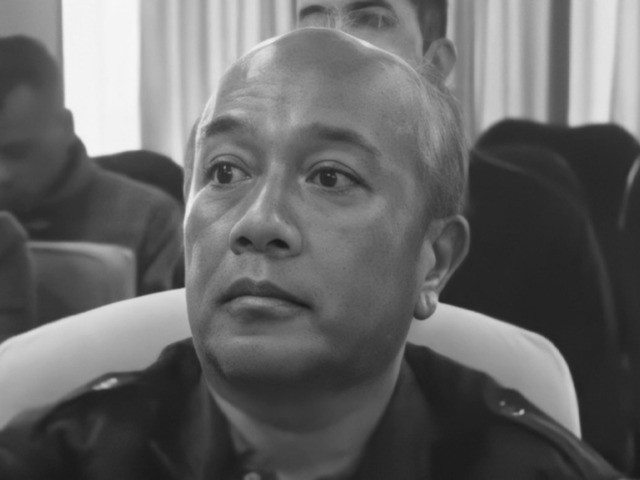
50TH STATEHOOD DAY OF MANIPUR,MEGHALAYA AND TRIPURA
50TH STATEHOOD DAY OF MANIPUR, MEGHALAYA & TRIPURA
India every year on January 21 observes the Statehood Day of Tripura, Manipur, and Meghalaya signifying the beauty of cultural diversity that India has. The 50th Statehood Day of Tripura, Manipur, and Meghalaya is also an opportunity to remember India of what it was and how we know it today. January 21 marks an important historical event as on this day North East Reorganisation Act, 1971 was implemented providing statehood to Tripura, Meghalaya, and Manipur which is also known as the foundation day of these three states of India.

50TH STATEHOOD DAY OF TRIPURA, MANIPUR, MEGHALAYA: HISTORY
Manipur & Tripura, which were the former Princely states, were merged into the Indian Union in October 1949 and they became full states on January 21, 1972, under the North Eastern Region (ReOrganisation) Act, 1971. Meghalaya, which was part of Assam, also received its statehood under the same act. Soon after the country gained independence from British Rule, the princely states that had blended into the Indian Union had started receiving statehood. On one hand, where Tripura and Manipur were granted the status of Union Territories in 1949, Meghalaya was still a part of Assam. Later, in 1969, through Assam Reorganisation (Meghalaya) Act, 1969, the state successfully received autonomous state recognition. It was finally on January 21, 1972, that Tripura, Meghalaya, and Manipur, with the introduction of the North Eastern Region (Reorganization) Act, 1971, attained complete statehood.
50th Statehood Day of Manipur, Meghalaya, Tripura: Facts about the three states
Tripura in the North East shares its borders with Bangladesh to the North, South, and West. It also borders the states of Mizoram and Assam to the East. The Hindu-Bengali population forms the majority in the state. Meghalaya is the wettest region of India. The state shares its border to the South with the Bangladesh divisions of Sylhet and Mymensingh. Manipur borders Mizoram in the South, Nagaland in the North, Myanmar in the East, and Assam in the West. The state is home to the Kuki, Meitei, Pangal, and Naga ethnic people who speak Sino-Tibetan languages.
Current Affairs Notes By Success Mantra Coaching Institute GTB Nagar Delhi CLICK HERE
RECENT ONGOING ISSUES IN NORTH-EAST
DEMAND FOR GREATER TIPRALAND
- Recently, several tribal outfits in Tripura have joined hands to push their demand for a separate state, Greater Tipraland for indigenous communities in the region. Among the political parties that have come together for the cause are TIPRA Motha (Tipraha Indigenous Progressive Regional Alliance) and IPFT (Indigenous People’s Front of Tripura).
- The Demand: The parties are demanding a separate state of ‘Greater Tipraland’ for the indigenous communities of the north-eastern state. They want the Centre to carve out the separate state under Article 2 and 3 of the Constitution. Among the 19 notified Scheduled Tribes in Tripura, Tripuris (aka Tipra and Tiprasas) are the largest. According to the 2011 census, there are at least 5.92 lakh Tripuris in the state, followed by Bru or Reang (1.88 lakh) and Jamatias (83,000).

Article 2 & 3 of the Indian Constitution
- Article 2: Parliament may by law admit into the Union, or establish, new States on such terms and conditions as it thinks fit. However, Parliament cannot establish a new union territory by passing a law that can only be done through a constitutional amendment. States like Sikkim (previously not within India) became a part of the country under Article
- Article 3: It empowered the Parliament to make law relating to the formation of new states and alteration of existing states.
ASSAM-MEGHALAYA BORDER DISPUTE
Assam and Meghalaya share an 885-km-long border. As of now, there are 12 points of dispute along their borders. The Assam-Meghalaya border dispute are the areas of Upper Tarabari, Gazang reserve forest, Hahim, Langpih, Borduar, Boklapara, Nongwah, Matamur, Khanapara-Pilangkata, Deshdemoreah Block I and Block II, Khanduli and Retacherra. Meghalaya was carved out of Assam under the Assam Reorganisation Act, 1971, a law that it challenged, leading to disputes.
Major Point of Contention:
A major point of contention between Assam and Meghalaya is the district of Langpih in West Garo Hills bordering the Kamrup district of Assam. Langpih was part of the Kamrup district during the British colonial period but post-Independence, it became part of the Garo Hills and Meghalaya. Assam considers it to be part of the Mikir Hills in Assam. Meghalaya has questioned Blocks I and II of the Mikir Hills -now Karbi Anglong region - being part of Assam. Meghalaya says these were parts of erstwhile United Khasi and Jaintia Hills districts.

ARMED FORCES (SPECIAL POWERS) ACT, 1958
- A reincarnation of the British-era legislation that was enacted to quell the protests during the Quit India movement, the AFSPA was issued by way of four ordinances in 1947. The ordinances were replaced by an Act in 1948 and the present law effective in the Northeast was introduced in Parliament in 1958 by the then Home Minister, G.B. Pant. It was known initially as the Armed Forces (Assam and Manipur) Special Powers Act, 1958. After the States of Arunachal Pradesh, Meghalaya, Mizoram, and Nagaland came into being, the Act was adapted to apply to these States as well.
- About: The AFSPA gives unfettered powers to the armed forces and the Central armed police forces deployed in “disturbed areas” to kill anyone acting in contravention of law and arrest and search any premises without a warrant and with protection from prosecution and legal suits. The law first came into effect in 1958 to deal with the uprising in the Naga Hills, followed by the insurgency in Assam.
- Disturbed Areas: The Act was amended in 1972 and the powers to declare an area as “disturbed” were conferred concurrently upon the Central government along with the States. Currently, the Union Home Ministry issues periodic “disturbed area” notification to extend AFSPA only for Nagaland and Arunachal Pradesh. The notification for Manipur and Assam is issued by the State governments. Tripura revoked the Act in 2015 and Meghalaya was under AFSPA for 27 years, until it was revoked by the MHA from 1st April 2018. The Act was implemented in a 20-km area along the border with Assam. Jammu and Kashmir has a separate J&K Armed Forces (Special Powers) Act, 1990.

UPHEAVAL IN MEGHALAYA - HNLC CRISIS
After the death of Cherishterfield Thangkhiew, a former militant of the outlawed Hynniewtrep National Liberation Council (HNLC), during a police operation, Shillong witnessed arson, stone pelting, and vandalism on August 15, 2021, and has been put under curfew till August 18, 2021. Meghalaya’s Home Minister Lahkmen Rymbui on August 15, 2021, resigned and called for a judicial probe to uncover the truth behind the killing of Thangkhiew of the HNLC during a police operation on August 13. Amid the unrest, the Meghalaya government has suspended internet services for 72 hours in four districts, East Khasi Hills, West Khasi Hills, South-West Khasi Hills, and Ri-Bhoi district beginning from 6 pm on August 15, 2021.
Important Update regarding the recent IED explosion in Laitumkhrah: An operation was launched in the early hours of 13th August to arrest one Cherishterfield Thangkhiew and his associates, who attacked the Police team in an attempt to escape.

WHO WAS CHERISHTERFIELD THANGKHIEW?
Thangkhiew was the founding General Secretary of the separatist Hynniewtrep National Liberation Council (HNLC). Thangkhiew had entered militancy in 1987 and was the co-founder of the first prominent separatist militant tribal organization Hynniewtrep Achik Liberation Council (HALC) in Meghalaya. He surrendered to the government in October 2018. Thangkhiew was gunned down at his residence in Shillong during a police encounter on August 13. The encounter was reportedly carried out by the police team of East Khasi Hills and East Jaintia Hills. The Police team in their statement said that Thangkhiew came upon the team with a knife to which the police team in their defense fired a single shot at him. Meghalaya police further stated that they had strong incriminating evidence of Thangkhiew’s involvement in the IED blasts in the past two months.

BACKGROUND OF THE ISSUE
Meghalaya shares a border with Bangladesh and has seen decades of migration from the neighbouring country as well as from other parts of India - Bengal, Punjab and Bihar. This has sparked anxieties of indigenous communities who feared becoming a "minority in their own homeland" because of the influx of "outsiders". It was a culmination of these "anti-outsider sentiments" that led to the formation of Meghalaya's first militant group, the Hynniewtrep Achik Liberation Council (HALP), in 1992. Hynniewtrep represented the Khasi and Jaintia communities and Achik represented the Garo community. HALC was later divided and HNLC came into being that represented the Khasi and Jaintia communities and the Achik Matgrik Liberation Army that represented the Garo community. The Achik Matgrik Liberation Army was later replaced by the Achik National Volunteers Council (ANVC). HNLC claimed to represent only the interest of Khasi Communities, whereas, the Achik Matgrik Liberation Army demanded a separate state for the Garo community.
Present Status of militancy in Meghalaya: The ANVC since 2004 has been under an extended ceasefire agreement with the government while the HNLC has been trying to talk peace with the government but on a conditional basis. Over the last several years, militancy in Meghalaya was seen as declining. In 2018, the Centre withdrew the Armed Forces Special Powers Act (AFSPA) from Meghalaya after almost 27 years of witnessing a decline by 80% in insurgency-related incidents.
Insurgencies in other North East states:
- Nagaland: Naga Insurgency
- Mizoram: Mizo Movement.
- Assam Insurgency: United Liberation Front of Assam (U.L.F.A.) was formed in 1979 for the deportation of illegal migrants, Bodoland Statehood Movement.
- Manipur: United National Liberation Front formed in 1964, with an objective of ending the discrimination against Manipur.
- Arunachal Pradesh: The only case of indigenous insurgency movement in Arunachal Pradesh was the rise of the Arunachal Dragon Force (ADF), which was rechristened as East India Liberation Front (EALF) in 2001.
PRAVAHINI Current Affairs Notes By Success Mantra Coaching Institute GTB Nagar Delhi CLICK HERE
TEST YOURSELF
Q.1 Recently, 4 North-Eastern states have celebrated their statehood day on 21st January. Which of the following States is not one of them?
- Meghalaya
- Tripura
- Manipur
- Mizoram: ANSWER
Q.2 The 'Greater Tipraland demand' mainly inspired by the 'Greater Nagalim' demand, which is a movement of which of the following states?
- Nagaland: ANSWER
- Mizoram
- Manipur
- Tripura
Q.3 Which of the following statements is/are incorrect in the reference to the 'Greater Tipraland' demand?
- It is an extension of the ruling Indigenous Peoples Front of Tripura's (IPFT) demand of Tipraland, which seeks to form a separate state for tribals of Tripura.
- Tripura royal scion Pradyot Kishore Manikya who put forward the demand was the state President of the BJP: ANSWER
- It also includes ‘Tiprasa’ of Tripuris spread across different states of India like Assam, Mizoram and even those living in areas bordering Bangladesh.
- None of the above
Q.4 Which of the following is the Minister of Development of North Eastern Region (DoNER) responsible for the matters relating to the planning, execution and monitoring of development schemes and projects in the North Eastern Region?
- Jitendra Singh: ANSWER
- Kiren Rijiju
- Rao Inderjit Singh
- None of the above
Q.5 Consider the given statements l& state which of the following is/are incorrect in the reference to the Khasi Community of Meghalaya?
- Khasi people are an indigenous ethnic group of Meghalaya in north-eastern India.
- They have a distinctive culture and it is the second largest tribe of Meghalaya after the Garo Community: ANSWER
- Both inheritance of property and succession to tribal office run through the female line, passing from the mother to the youngest daughter.
- None of the above












RaymondVon
Hellow,Moderator, The timing of this idea is perfect, thank you for the link: https://xn--mg-g5sse.com Мега onion - это уникальная площадка, и мы предоставляем вам ссылку на официальное зеркало от администрации проекта. Вам нужно всего лишь кликнуть по этой ссылке <a href=https://xn--mgasb-n51b.com>mega sb</a> , зайти на маркет и подобрать нужные продукты. Наша площадка полностью анонимна, работает круглосуточно и не требует подключения Tor или VPN. Просто перейдите на официальный маркетплейс MEGA и начните работу с проектом. Для этого потребуется всего несколько простых регистрационных шагов и несколько кликов мышью. А если у вас возникнут любые трудности, проблемы или вопросы, всегда можете обратиться к администрации проекта - мы всегда готовы помочь. mega links:https://xn--mgasb-n51b.com как зайти на mega:https://xn--mgasb-n51b.com мега.сб:https://xn--meg-sb-yoc.com mega sb зеркало:https://xn--mg-8ma3631a.com KTHH2188NIKI66!